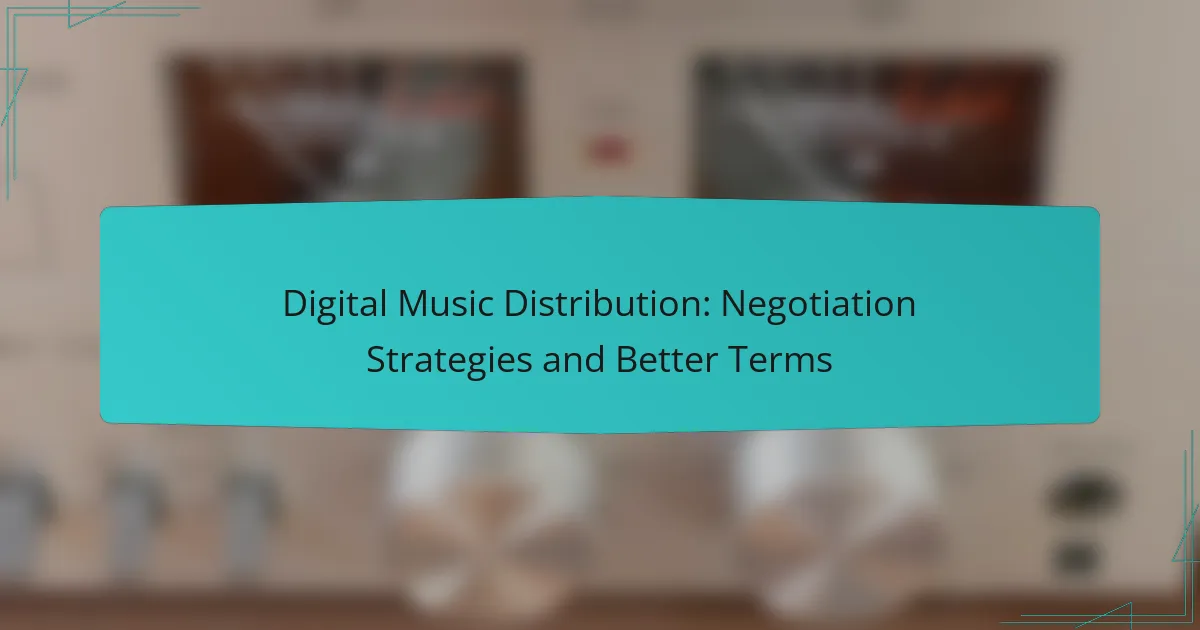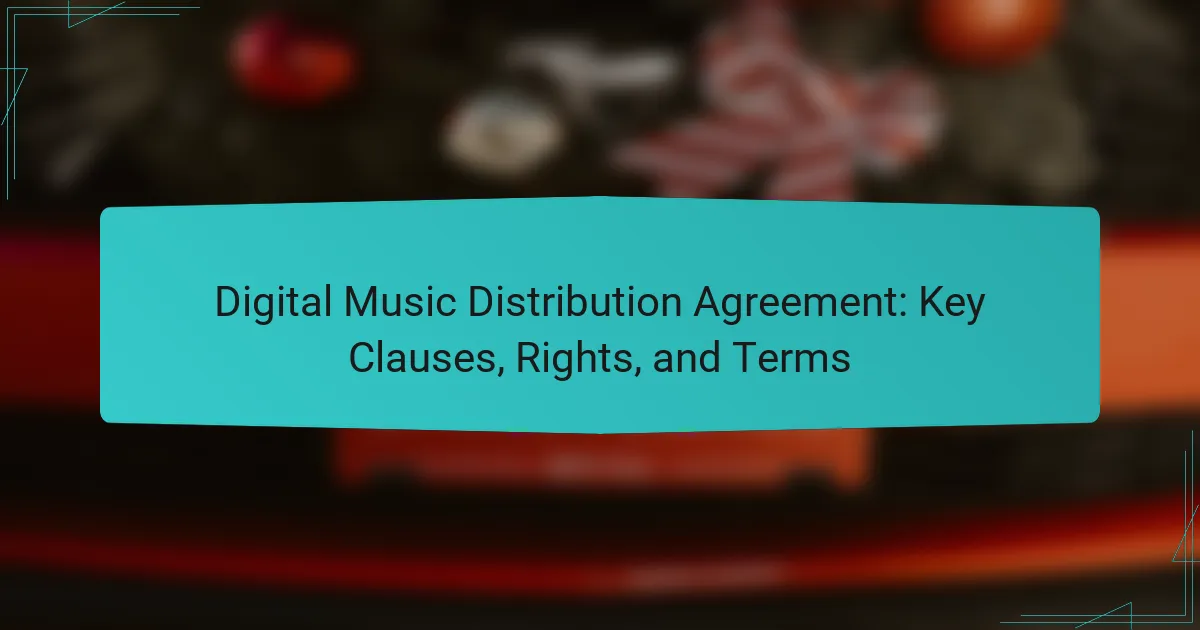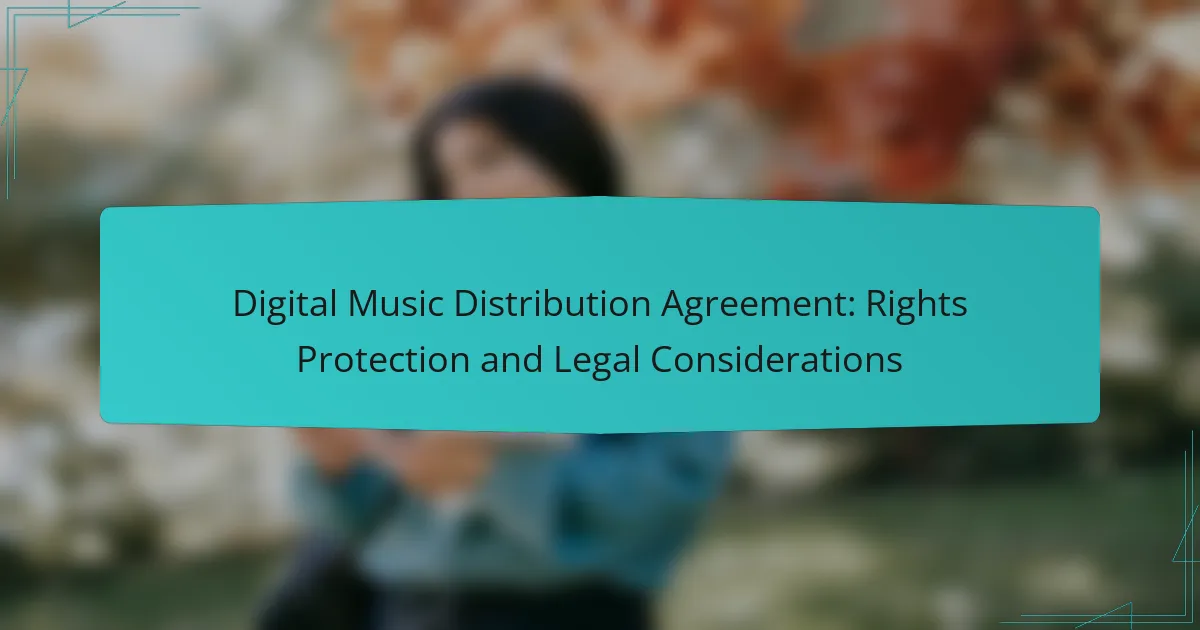In the competitive landscape of digital music distribution, effective negotiation strategies are essential for artists and labels to secure favorable terms. By understanding industry norms, leveraging data, and fostering strong relationships, stakeholders can maximize their revenue potential. Thorough research and clear communication are key to avoiding common pitfalls and ensuring that all parties’ needs are met in the negotiation process.
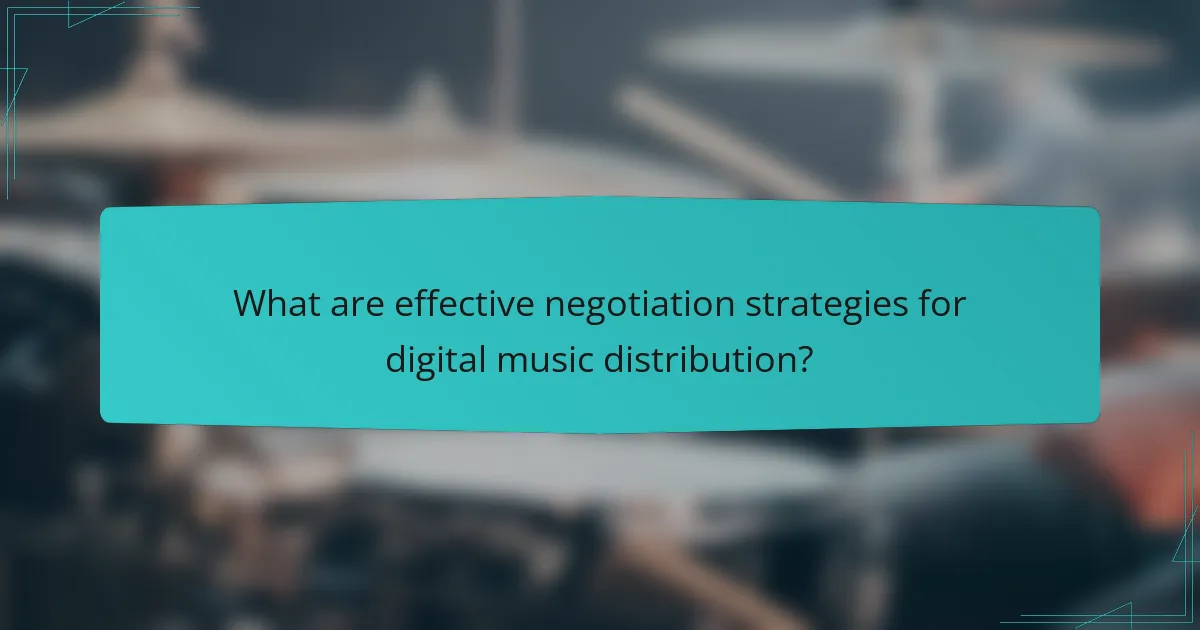
What are effective negotiation strategies for digital music distribution?
Effective negotiation strategies for digital music distribution involve understanding industry norms, leveraging data, and building strong relationships. These tactics can help secure better terms and maximize revenue potential.
Understanding industry standards
Familiarizing yourself with industry standards is crucial in negotiations. This includes knowing typical royalty rates, distribution fees, and contract lengths, which can vary significantly across platforms.
For instance, many digital distributors offer royalty rates ranging from 15% to 30% of sales. Understanding these benchmarks allows you to negotiate from a position of knowledge and confidence.
Leveraging data analytics
Data analytics can provide insights into your music’s performance, helping you negotiate better terms. By analyzing streaming numbers, audience demographics, and sales trends, you can present compelling data to support your case.
For example, if your track has consistently high engagement, you can argue for a higher royalty rate based on its proven success. Utilize platforms that offer analytics tools to gather and present this information effectively.
Building strong relationships with distributors
Establishing strong relationships with distributors can lead to more favorable negotiation outcomes. Trust and communication can facilitate smoother discussions and better terms.
Consider regular check-ins and open dialogue about your needs and expectations. Building rapport can also lead to opportunities for promotional support or exclusive deals that benefit both parties.
Utilizing legal expertise
Having legal expertise in your corner can significantly enhance your negotiation strategy. A knowledgeable attorney can help you understand contract language and identify potential pitfalls.
Before entering negotiations, consult with a legal professional to review your current agreements and clarify any terms that may be unfavorable. This preparation can empower you to negotiate more effectively.
Preparing for counteroffers
Expecting counteroffers is a key part of the negotiation process. Be prepared to respond to proposals that may not meet your initial expectations.
Establish your minimum acceptable terms beforehand and practice your responses to various scenarios. This readiness can help you maintain control during negotiations and secure a deal that aligns with your goals.
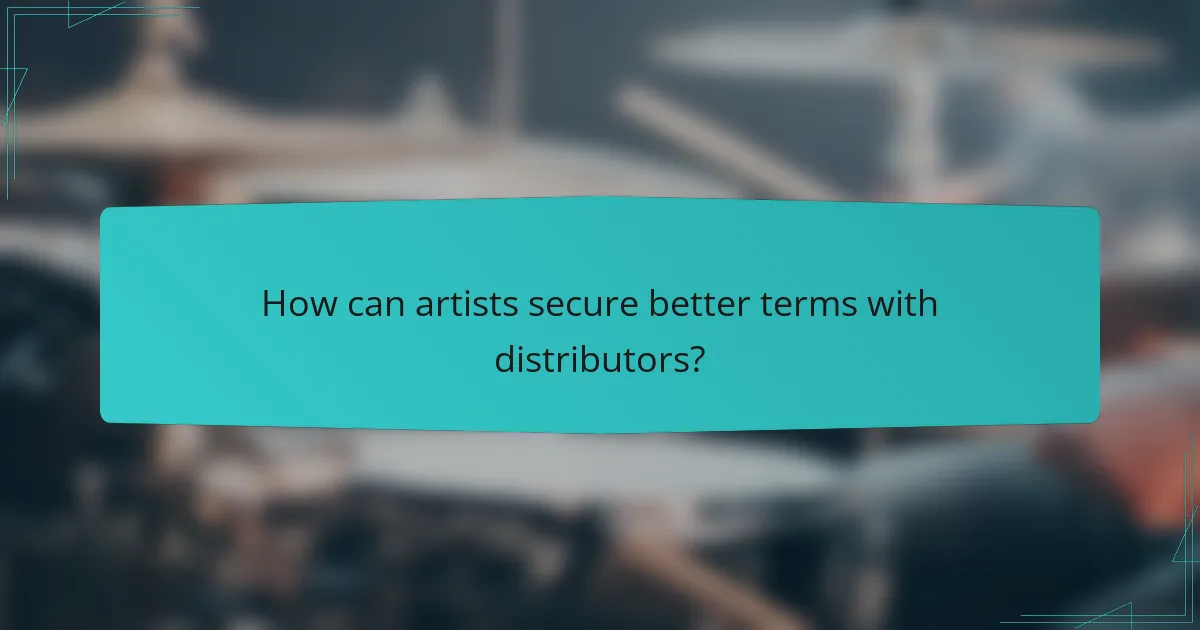
How can artists secure better terms with distributors?
Artists can secure better terms with distributors by conducting thorough research, negotiating key financial aspects, and ensuring that their needs for marketing support are addressed. Understanding the landscape and leveraging negotiation tactics can lead to more favorable agreements.
Researching distributor reputation
Before entering negotiations, artists should investigate the reputation of potential distributors. Look for reviews, testimonials, and case studies from other artists to gauge the distributor’s reliability and service quality.
Consider reaching out to fellow musicians or industry contacts for firsthand experiences. A distributor with a strong reputation is more likely to offer better terms and support.
Negotiating upfront payments
Securing upfront payments can significantly improve an artist’s cash flow. When negotiating, aim for a percentage of anticipated earnings or a flat fee to be paid upon signing the contract.
Be prepared to justify your request with data on your previous sales or streaming numbers. Many distributors are open to upfront payments, especially if they see potential in your music.
Requesting favorable royalty splits
Artists should strive for a royalty split that reflects their contribution and market potential. Typical splits range from 70/30 to 85/15 in favor of the artist, but this can vary widely depending on the distributor.
When negotiating, emphasize your value and any unique aspects of your music that could justify a more favorable split. Don’t hesitate to ask for a higher percentage if you have a strong following or proven track record.
Incorporating marketing support clauses
Including marketing support clauses in your agreement can enhance your visibility and sales. Request specific commitments from the distributor regarding promotional efforts, such as social media campaigns or playlist placements.
Clarify the expectations and deliverables to ensure that both parties are aligned. A distributor that actively markets your music can significantly impact your success in a competitive landscape.
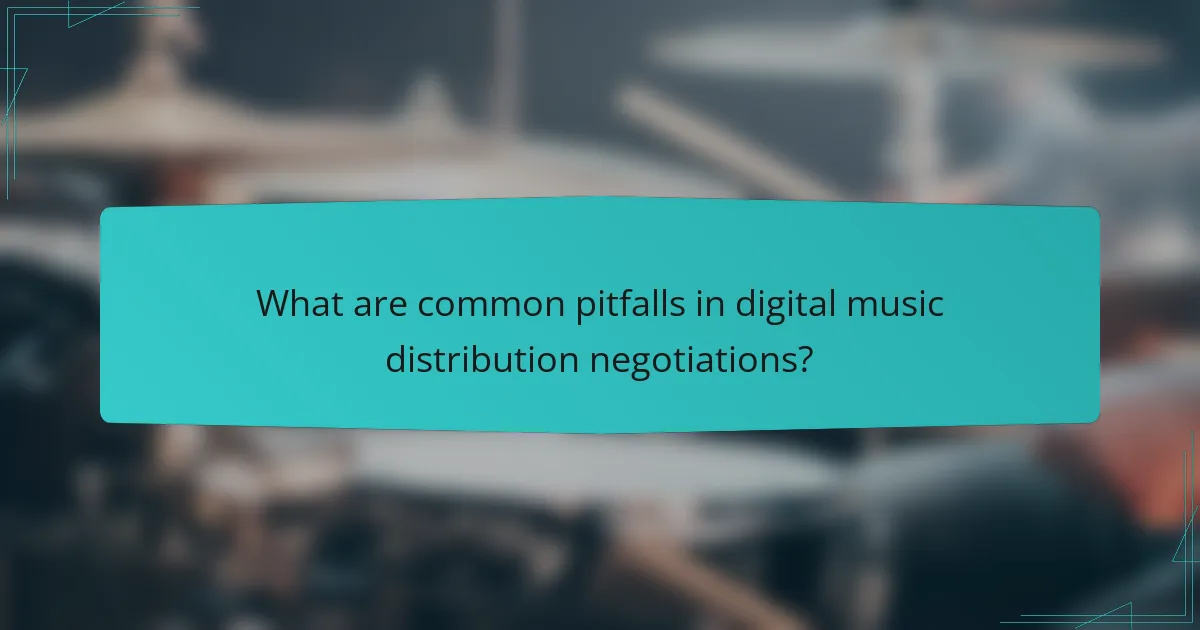
What are common pitfalls in digital music distribution negotiations?
Common pitfalls in digital music distribution negotiations include overlooking critical details in contracts, miscalculating distribution fees, and failing to establish clear expectations with partners. These mistakes can lead to unfavorable terms and reduced revenue for artists and labels.
Ignoring fine print in contracts
Many artists and labels neglect to thoroughly review the fine print in distribution contracts, which can contain clauses that significantly impact revenue and rights. Key areas to scrutinize include termination clauses, royalty calculations, and rights to future works.
To avoid issues, consider creating a checklist of essential contract elements to review. This should include payment terms, exclusivity agreements, and any penalties for early termination. Consulting a legal expert can also provide valuable insights into complex terms.
Underestimating distribution fees
Distribution fees can vary widely among platforms, and underestimating these costs can erode profits. Fees may range from a flat rate to a percentage of sales, and additional charges for promotional services or advanced analytics can further impact earnings.
Artists should research various distribution services to compare fee structures. A common approach is to calculate potential earnings based on different fee scenarios, ensuring that the chosen platform aligns with financial goals.
Failing to set clear expectations
Setting clear expectations with distribution partners is crucial for a successful collaboration. This includes defining roles, timelines for releases, and marketing responsibilities. Without clear communication, misunderstandings can lead to missed opportunities and dissatisfaction.
To mitigate this risk, draft a detailed agreement outlining each party’s responsibilities and expectations. Regular check-ins can also help ensure that all parties are aligned and can address any issues as they arise.

What criteria should artists consider when choosing a distributor?
Artists should evaluate several key criteria when selecting a digital music distributor, including distribution reach, fee structures, and support services. These factors can significantly impact an artist’s ability to reach audiences and maximize revenue.
Distribution reach and platforms
Distribution reach refers to the number of platforms and territories a distributor can access. Artists should look for distributors that cover major streaming services like Spotify, Apple Music, and Amazon Music, as well as niche platforms that cater to specific genres or audiences.
Additionally, consider whether the distributor offers global reach or focuses on specific regions. For example, some distributors may excel in European markets while others might have stronger connections in North America or Asia.
Fee structures and transparency
Understanding the fee structures of different distributors is crucial for artists. Some distributors charge a flat fee per release, while others take a percentage of sales. It’s important to compare these costs and assess how they align with your expected revenue.
Transparency is also vital; look for distributors that clearly outline their fees and any additional charges. Avoid those with hidden fees that could eat into your profits. A good practice is to request a breakdown of all costs before signing any agreements.
Support services offered
Support services can enhance an artist’s experience with a distributor. Some distributors provide marketing tools, analytics, and customer support to help artists promote their music effectively. Evaluate what additional services are included in the distribution package.
Consider whether the distributor offers personalized support or resources for independent artists. This can include guidance on best practices for releasing music, promotional strategies, and insights into audience engagement.
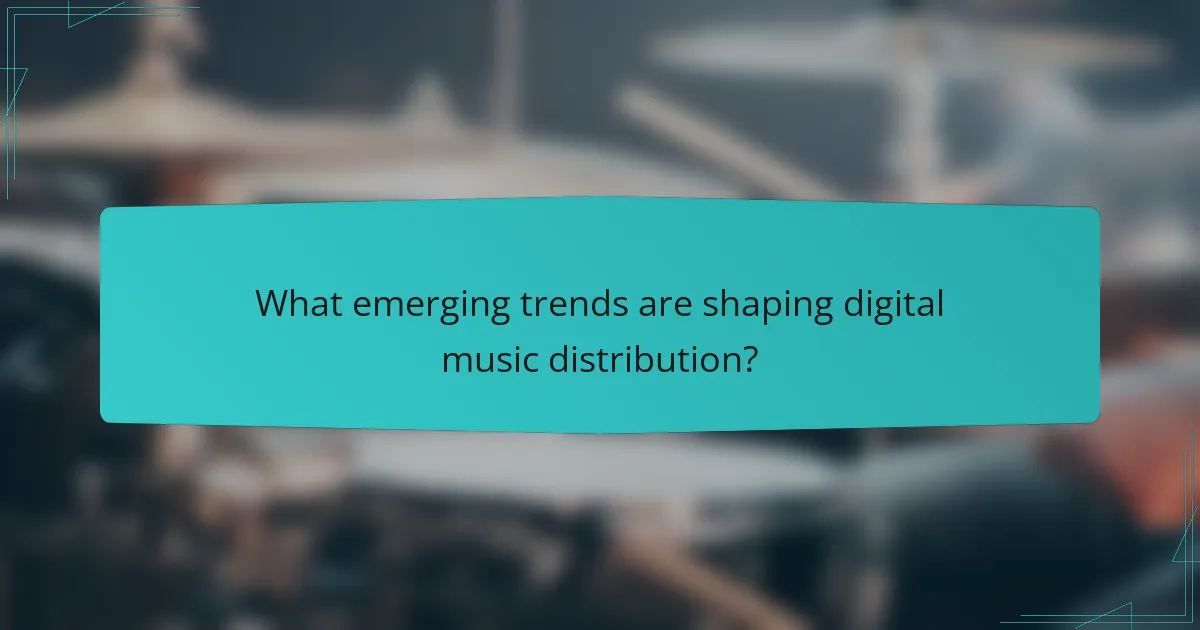
What emerging trends are shaping digital music distribution?
Emerging trends in digital music distribution are significantly transforming how artists and labels manage their music. Key developments include the rise of blockchain technology, increased focus on direct-to-fan sales, and the growing importance of data analytics for marketing and distribution strategies.
Rise of blockchain technology
Blockchain technology is revolutionizing digital music distribution by providing a decentralized platform for artists to manage their rights and royalties. This technology allows for transparent tracking of music usage, ensuring that artists receive fair compensation for their work.
By utilizing smart contracts, artists can automate royalty payments and eliminate intermediaries, which can lead to higher earnings. For example, platforms like Audius and Ujo Music are already implementing blockchain solutions to facilitate direct payments to creators.
However, artists should be aware of the complexities involved in blockchain adoption, including the need for technical knowledge and the potential volatility of cryptocurrency markets. It’s essential to research and choose platforms that align with their goals and offer user-friendly interfaces.
